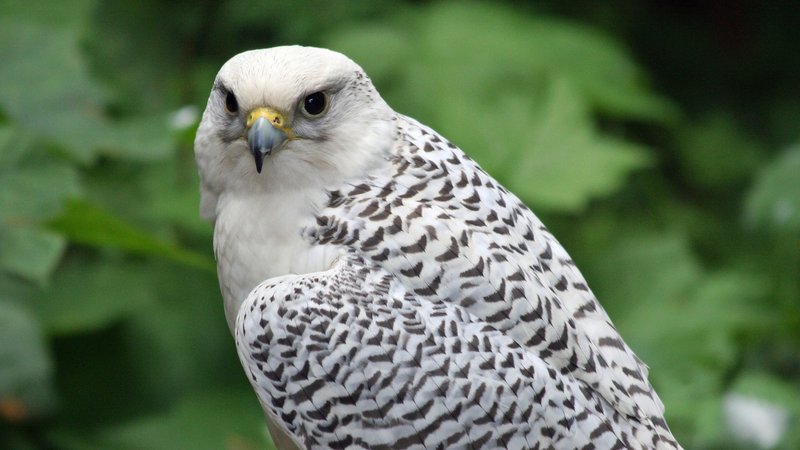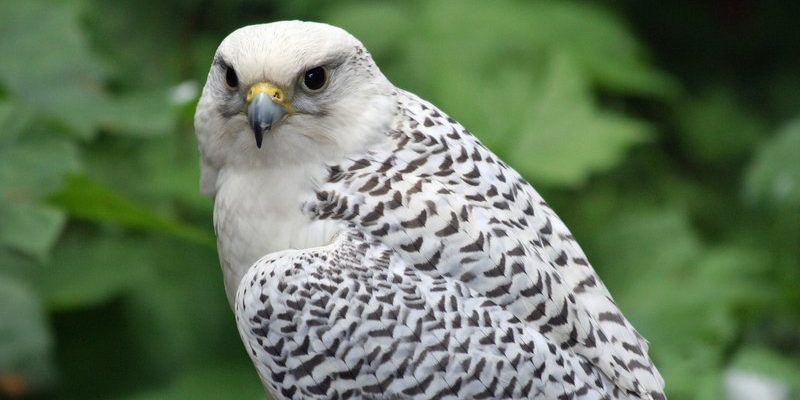
So, where can you catch a glimpse of this magnificent bird? The Gyrfalcon has a vast range, primarily found in the icy reaches of the northern hemisphere. If you’ve ever dreamed of seeing this magnificent creature in its natural habitat, you’ll need to know where to look. Let’s take a journey to discover the various regions around the globe where Gyrfalcons make their home.
The Arctic: Home Sweet Home
The Arctic is the Gyrfalcon’s prime habitat. Think of it as their cozy winter lodge. These birds thrive in the cold, open tundra where they can spot prey from high above. The Arctic regions of Canada, Greenland, and Alaska are particularly rich in Gyrfalcon activity.
In these areas, you’ll typically find them perched on rocky cliffs or high trees, scanning the ground for small mammals like lemmings and birds. The stark, white landscape provides excellent camouflage, allowing them to blend in until they’re ready to pounce.
You might be wondering how you’d even spot one in these vast, snowy expanses. A good tip is to look for their large size and distinctive coloration. They come in various shades, from pure white to dark gray, but they all have those sharp, piercing eyes that give away their presence.
Coastal Regions of the North
Besides the Arctic tundra, Gyrfalcons also favor coastal locations. These birds are often found along Arctic coastal cliffs where they take advantage of both land and sea-based prey. Think about it: they can swoop down after seabirds or hunt for smaller mammals that venture near the shore.
Iceland and Norway are prime spots where these birds can be seen. The combination of dramatic cliffs and ocean views makes for an ideal hunting ground. Many birdwatchers flock to these regions, especially during migration seasons. If you find yourself near blustery coastlines, keep your eyes peeled. The Gyrfalcon’s keen hunting skills shine in these dynamic environments.
In coastal areas, you may even spot them interacting with other birds, adding a layer of excitement to your birdwatching adventure. Their interactions can be quite the show, demonstrating their agility and prowess in the air.
Mountainous Regions and Highlands
When it comes to rugged landscapes, Gyrfalcons are not shy about claiming high-altitude territories. They love open, mountainous regions where they can nest on ledges and hunt in the breezy heights. These areas often provide a bountiful supply of prey—think of rock ptarmigans or small mammals scurrying along the rocky terrain.
The mountains of Alaska and the Scottish Highlands are key spots to observe these birds. The combination of craggy rocks and open skies creates a perfect setting for the Gyrfalcon to thrive. If you’re hiking or trekking in these regions, keep your binoculars handy; you might just catch a glimpse of one soaring overhead.
The thrill of spotting a Gyrfalcon in such a dramatic setting is truly something special. Imagine standing on a misty mountain peak, with the sun breaking through the clouds, and then suddenly seeing this majestic bird sweep past. It’s moments like these that remind us why nature feels so exhilarating.
Migration Patterns: Following the Seasons
Gyrfalcons are known for their migratory behavior, often moving from their breeding grounds in the Arctic to more temperate areas during the winter months. This means that their habitats change with the seasons. In the autumn, they might be spotted in the lower coastal areas or even moving toward southern Canada and parts of the northern United States.
You might be curious about how they navigate these vast distances. Gyrfalcons are equipped with remarkable homing instincts that guide them through challenging weather and terrain. Their keen eyesight also helps them spot potential food sources along the way, making their journey not just a flight, but an intricate hunt.
During migration, birdwatchers can find Gyrfalcons in new locations, making this a great time to observe their behavior. Look for them near rivers and open fields, where they might be hunting or resting during their travels.
Urban Environments: A Surprising Adaptation
While Gyrfalcons prefer remote areas, they’ve also adapted to urban environments in certain parts of the world. It might surprise you to learn that cities like New York and Toronto have become unlikely habitats for these majestic birds. They often nest on tall buildings or bridges, using the urban landscape as a hunting ground.
You’re probably wondering why they would choose cities over their natural habitats. The answer lies in food availability. Urban areas can provide an abundance of pigeons and other birds, making it an appealing choice for a hungry Gyrfalcon. Plus, the height of buildings mimics their natural perching spots.
So, if you’re near a city, don’t forget to look upward. You might just see a Gyrfalcon perched on a skyscraper, a striking reminder that nature can thrive even in the heart of urban life. It’s a blend of the wild and the modern world, creating a fascinating dynamic you won’t want to miss.
Conservation Status: Why It Matters
The Gyrfalcon, while widespread, is not without its challenges. Climate change and habitat destruction pose significant threats to their populations. As the Arctic warms, their breeding grounds may be affected, impacting food sources and nesting habitats. It’s crucial to understand these threats to appreciate the importance of conservation efforts.
You might ask, “What can I do to help?” Supporting wildlife conservation organizations is a great start. Additionally, practicing responsible birdwatching—staying a safe distance and not disturbing their habitats—can make a difference.
By being aware of the Gyrfalcon’s plight and taking positive action, we can help ensure that future generations get to admire this incredible bird. Just think about how amazing it would be to tell your children or grandchildren about the majestic Gyrfalcon flying through untouched Arctic landscapes.
Final Thoughts: Embracing the Wild
Spotting a Gyrfalcon is about more than just observing a bird; it’s about connecting with our planet’s wild side. From the icy Arctic tundra to bustling urban environments, these birds reflect the adaptability and beauty of nature. As you set out on your quest to find them, keep in mind their remarkable journey across diverse landscapes.
Whether you’re a seasoned birdwatcher or a curious beginner, there’s joy in discovering the habitats and ranges of the Gyrfalcon. Let the thrill of the chase inspire you to explore, learn, and appreciate the world around you. Who knows? You might just find yourself captivated by the wild heart of the Gyrfalcon.

